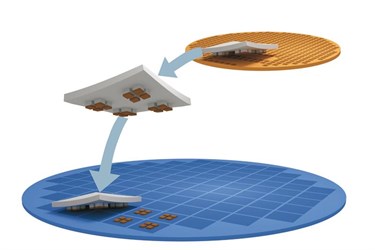X-FAB the first foundry to offer high-volume micro-transfer printing capabilities

X-FAB Silicon Foundries, the analogue/mixed-signal foundry, can now support volume heterogeneous integration via Micro-Transfer Printing (MTP), thanks to a licensing agreement that has just been secured with X-Celeprint.
As a result of the agreement it will now be possible to bring together a diverse range of Semiconductor technologies, each being optimised for particular functional requirements. These will include SOI, GaN, GaAs and InP, as well as MEMS.
In order to become the first foundry to provide customers with MTP-based heterogeneous integration, X-FAB has made substantial investments over the last two years. It has also established new optimiSed workflows and cleanroom protocols. This will allow customers to work with the foundry on heterogeneous design projects – benefitting from a low-risk and fully scalable business model that offers a clear migration to volume production.
X-Celeprint’s proprietary massively-parallel pick-and-place MTP technology stacks and fans-out ultra-thin dies based on different process nodes, technologies, and wafer sizes and results in the formation of virtually monolithic 3D stacked ICs, which have enhanced performance, greater power efficiency, and take up less space.
In addition, all this can be achieved at an accelerated rate, thereby significantly shortening time-to-market.
“By licensing X-Celeprint’s disruptive MTP technology, we are uniquely positioned in our ability to facilitate the incorporation of numerous different semiconductor technologies. X-FAB customers will be able to utilize a technology that no other foundry is offering, and existing X-Celeprint customers may now tap into capacity levels that will easily meet their future demands,” expalined Volker Herbig, VP of X-FAB’s MEMS business unit. “As a result, we can assist customers looking to implement complete multifunctional subsystems at the wafer level, even when there are high degrees of complexity involved. Signal conditioning, power, RF, MEMS, and CMOS sensors, optoelectronic devices, optical filters, and countless other possibilities will all be covered.”